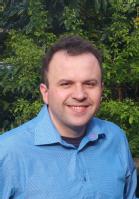Researchers put magic spin on protein to tease out its first dance with the tempo set by temperature
- All cells contain complex molecular components that fulfil functions necessary for the cell to live
- These components require motion in a very particular order to function almost like an intricate set of dance steps
- Different motions are acquired as the temperature increases
- Each component gains motion at different temperatures
- The order in which this takes place was previously unknown
- New research provides first unified understanding of how each component acquires the necessary motion in the intricate dance required for life

 The process behind how the molecular components of living organisms start to move has been explained for the first time in new research published by Science and it is an intricate set of dance steps where the tempo is set by temperature.
The process behind how the molecular components of living organisms start to move has been explained for the first time in new research published by Science and it is an intricate set of dance steps where the tempo is set by temperature.
Led Dr Józef Lewandowski, of the University of Warwick’s Department of Chemistry, the collaborative group of researchers used a method called Magic Angle Spinning Solid-State NMR Spectroscopy to determine the order in which the components of a protein, called Protein G and commonly found in Streptococcal bacteria, acquired the motion necessary for it function.
The researchers argue that this new understanding could potentially play a role in developing cures for diseases and producing new useful compounds from antibiotics to pesticides.
“In order to carry out their functions, proteins need to move and they bustle constantly inside a cell” explained Dr Lewandowski. “In addition, groups of atoms that make proteins have individual patterns of motion, making the entire protein a system of ceaseless complex movement.
“With this new research we have been able to determine the hierarchy for the complex network of motions of proteins. This provides us with a key for understanding these biological molecular machines and how they function”.
Dr Lewandowski explains:
“Proteins are in essence tiny machines that perform different jobs in living organisms. These machines require that their parts move in a specific way to accomplish specific tasks, like for example, a drum of a washing machine needs to be able to rotate with a specific speed to wash the clothes properly.
“If the moving parts of proteins do not acquire the appropriate patterns of motions they may either not be able to do what they supposed to or do it incorrectly”.
The collaborative group of researchers, who included Prof. L. Emsley, of EPFL, Lausanne, Switzerland, Dr M. Blackledge, of IBS, Grenoble, France, and Dr M. Halse, of University of York, UK argue that by understanding the order in which motion occurs it is possible to understand what has to happen at a molecular level for a living organism to function.
Whilst the work focused on Protein G, Dr Lewandowski argues that the research potentially provides a universal model that can be applied to the analogous component parts of all organisms.
Reference for original paper:
Lewandowski J.R, Halse ME, Blackledge M, Emsley, L. Direct observation of hierarchical protein dynamics. Science 01 May 2015. 348(6234): 578-581. DOI: 10.1126/science.aaa6111
High res Picture of Dr Józef Lewandowski is available at:
http://www2.warwick.ac.uk/services/communications/medialibrary/images/may2015/lewandowski_1.jpg
For further information please contact:
Dr Józef Lewandowski, Assistant Professor of Physical Chemistry
Department of Chemistry, University of Warwick
email: J.R.Lewandowski@warwick.ac.uk
tel: +44 (0) 24761 51355
Or
Peter Dunn, Director of Press and Policy University of Warwick
Tel UK: 024 76523708 office 07767 655860 mobile Tel
Overseas: +44 (0)24 76523708 office +44 (0)7767 655860
Email: p.j.dunn@warwick.ac.uk
PR92 6th May 2015
